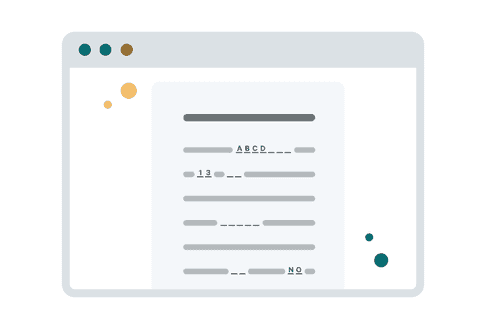Free As-Is Bill of Sale Form
A bill of sale is a document that outlines the details of goods or properties sold by one entity to another. As a more formal version of a receipt, it protects both parties should any legal issues arise.
What Is an As-Is Bill of Sale?
An as-is bill of sale is also known as an absolute or no-warranty bill of sale. It confirms that a transfer of ownership between the buyer and seller took place. It also frees the seller from any liability in case the item or property in question has any liens or encumbrances.
This form is normally used for high-value purchases, such as vehicles, equipment, campers, and other personal properties.
As-Is Bill of Sale Laws
- U.S. Common Law - The bill of sale in the U.S. is based on the common law, which is derived from judicial decisions rather than national or state statutes. The American legal system created common laws based on comparable laws and precedent (the analysis of previously decided cases or comparable laws).
- Uniform Commercial Code (UCC) - This code is a comprehensive set of laws that are uniformly adopted in the governance of all commercial transactions in the country. Though it isn’t a federal law, individuals can enter into bill of sale contracts with peace of mind knowing that the UCC is being enforced across the United States.
Common As-Is Transactions
As-is documents are necessary when there is a transfer of ownership regarding valuable personal assets due to a sale. Here are some of the most common as-is documents:
- Real estate contracts
- Vehicle bill of sale
- Animal bill of sale
- Boat bill of sale
- Firearm bill of sale
- Equipment bill of sale
How To Write an As-Is Bill of Sale
If you’re buying or selling valuable assets, you need a bill of sale. In addition to functioning as a receipt, it will protect you and the buyer from future legal impediments.
Here are the steps in creating an as-is bill of sale:
1. Download the as-is bill of sale template
For your convenience, download an as-is bill of sale template. This way, you only need to fill out the spaces with the details of your transaction.

2. Input the date of transaction
The date refers to the month, day, and year that the ownership of the property was officially transferred to the buyer. While it usually uses the date when payment was completed, both parties can agree on the date that the document should contain.

3. Write your names and personal information
There are a couple of sections in the document where you must put the names of those involved in the sale. At the top part, the as-is bill of sale template has a section titled, “The Parties.” This is where the buyer and seller enter their names and mailing addresses. The address must be current and usable. If either party wishes to communicate with the other, they should be able to use the indicated mailing address to reach them.

4. Note the transaction amount
The second section of the as-is bill of sale will have the word “Sale”. This is where the agreed transaction amount is written.

5. Include transaction details
You must include the details of the property that is the subject of the transaction. For example, if the bill of sale is for a motor vehicle, essential details to be included in the document are the make, model, body type, year manufactured, color, and mileage on the odometer.

6. Sign the document
Both parties must sign their names in the spaces near the bottom of the document. There are separate spaces provided for their signatures and the date when they signed the as-is bill of sale.
